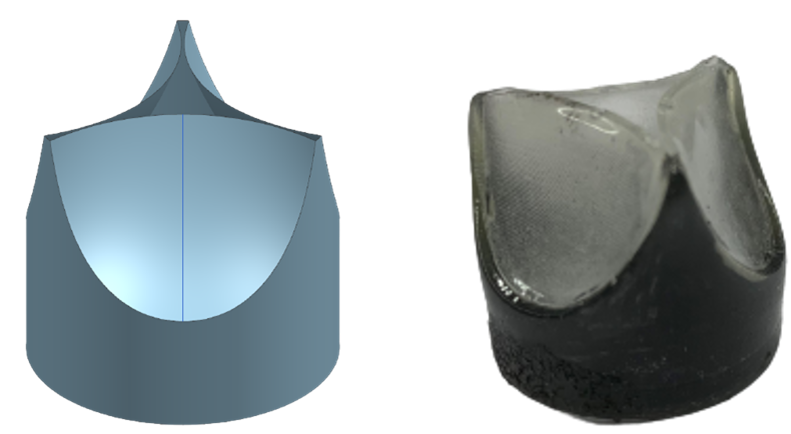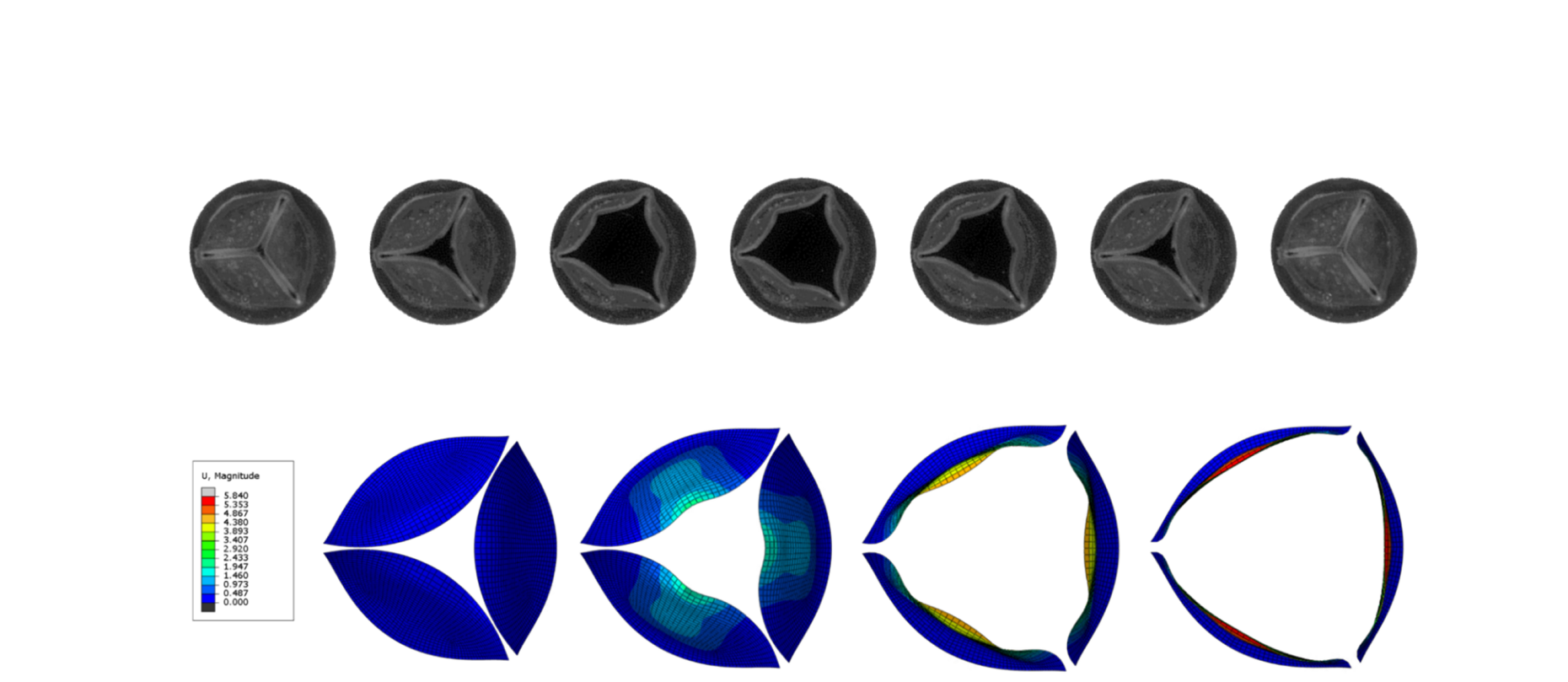Mechanics and design of fully polymeric heart valves with stiff leaflets
The project aims to develop a fully polymeric heart valve consisting of a previously developed foldable composite stent and new stiff leaflets. The focus of this research lies on the mechanics and the thereby derived design of the leaflets.


Project Team
- Caroline Smid, Doctoral Student
- Georgios A. Pappas, Senior Scientist
- Paolo Ermanni, Principal Investigator
Contact
Project Duration
July 2020 to present
Funding Sources
- CMASLab internal funding
- ETHeart initiative (of the Open ETH consortium)
- external pageZurich Heart projectcall_made of Hochschulmedizin Zürich
Project Description
During the last couple of years, CMASLab has devoted an important part of our research activity in a novel, fully synthetic, heart valve design. This design is based on a pioneer fiber reinforced composite stent, which has shown promise by respecting high durability and efficiency on the same time. This new design also has potential to replace heart valves with larger valvular orifice area, such as the tricuspid and the mitral valve. Moreover, it can act as a robust valve/valve-set for a total artificial implantable heart
Millions of people are suffering from valvular heart disease and despite the continuous development and improvement, there is still no synthetic heart valve that meets hemodynamic and durability requirements. Flexible polymer heart valves are a promising alternative to heart valves currently on the market. With our new heart valve, we want to combine the best of the current ones: the hemodynamics of the biological heart valves and the durability of the mechanical heart valves, while reducing manufacturing costs and increasing reproducibility. Therefore, in my research, I am investigating novel leaflet designs (Figure 1) for fully polymeric transcatheter heart valves, with a focus on ultra-stiff leaflets. The hypothesis is that by realizing a heart valve made of thin ultra-stiff leaflets attached to a CF-PEEK composite stent, current challenges with commonly used heart valve implants can be addressed leading to a very robust artificial heart valve prosthesis. Experimental, simulative, and analytical investigations on initial designs and the mechanical characterization of the leaflets will be conducted to obtain optimized designs, which exhibit a good efficiency (Figure 2).
This project is conducted in collaboration with the Translational Cardiovascular Technologies (TCT) group of ETHZ and external pageDeutsches Herzzentrum Berlin - DHZBcall_made.
